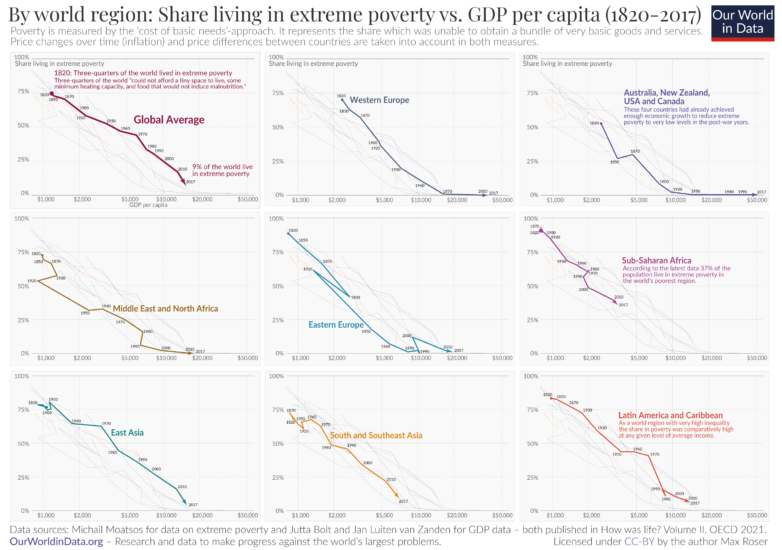We send two regular newsletters so our readers can stay up to date on our work — an immediate update and a biweekly digest. The newsletters differ in their content (though there is overlap), format, and sending frequency.
Immediate update
Subscribe to this one to receive an email notifying you whenever we publish new work. You’ll get a maximum of one email per day, and typically it will be one to two per week (sometimes a little more, sometimes less).
Here’s an example of what to expect with the immediate update.
Biweekly digest
Subscribe to this one to receive a digest of all our recently published work plus featured highlights of our previous work. You’ll get this one every second Friday.
Below is an example of what to expect with the biweekly digest. Here’s an example of what it will look like in your inbox.
→ Subscribe here to either or both of these newsletters.
We love feedback — if you have any about these newsletters, please let us know at newsletter@ourworldindata.org. We consider all feedback and frequently use it to improve our work. So thanks!
Biweekly digest example

Our recent publications
It’s tempting to believe that we can simply rely on personal experience to develop our understanding of the world.
But that’s a mistake. The world is large, and we can experience only very little of it personally. To see what the world is like, we need to rely on other means: carefully-collected global statistics.
Of course, our personal interactions are part of what informs our worldview. Every time we meet people and hear about their lives, we add one more perspective. This is no doubt a great way to see the world and expand our understanding — but we can’t lose sight of the limitations of this.
This article aims to remind us how little we can learn about our society through personal interactions alone, and how valuable statistics are in helping us build the rest of the picture.

Two centuries ago the majority of the world population was extremely poor — even those living in today’s richest countries. Back then it was widely believed that widespread poverty was inevitable.
But this turned out to be wrong. Economic growth is possible and poverty can decline. The world has made immense progress against extreme poverty.
Yet even after two centuries of progress, extreme poverty is still the reality for every tenth person in the world. This means nearly 800 million people.
In this article we explain that the poorest people today live in countries which have achieved no economic growth. This stagnation of the world’s poorest economies is one of the largest problems of our time. Unless this changes millions of people will continue to live in extreme poverty.

Explore our featured work
Malaria: One of the leading causes of child deaths, but progress is possible and you can contribute to it
We do not have to live in a world in which 1,320 children die every day from a disease that is preventable — malaria. Malaria is one of the leading causes of child death.
We know that progress against malaria is possible because it was once prevalent in many parts of the world that are now free of it today.
How have we made this progress, and how can we continue? Economic development has played a key role, but this is a slow process.
There are opportunities right now to protect people from malaria — with the use of insecticide-treated bed nets. This simple and cheap technology has saved millions of lives in the last few years.
As we explain in the article, each of us can individually contribute to this progress right now by making a donation to the organizations that are achieving this change — for example by following the donation recommendations at GiveWell.org.
The mission of Our World in Data is to make data and research on the world’s largest problems understandable and accessible for everyone.

